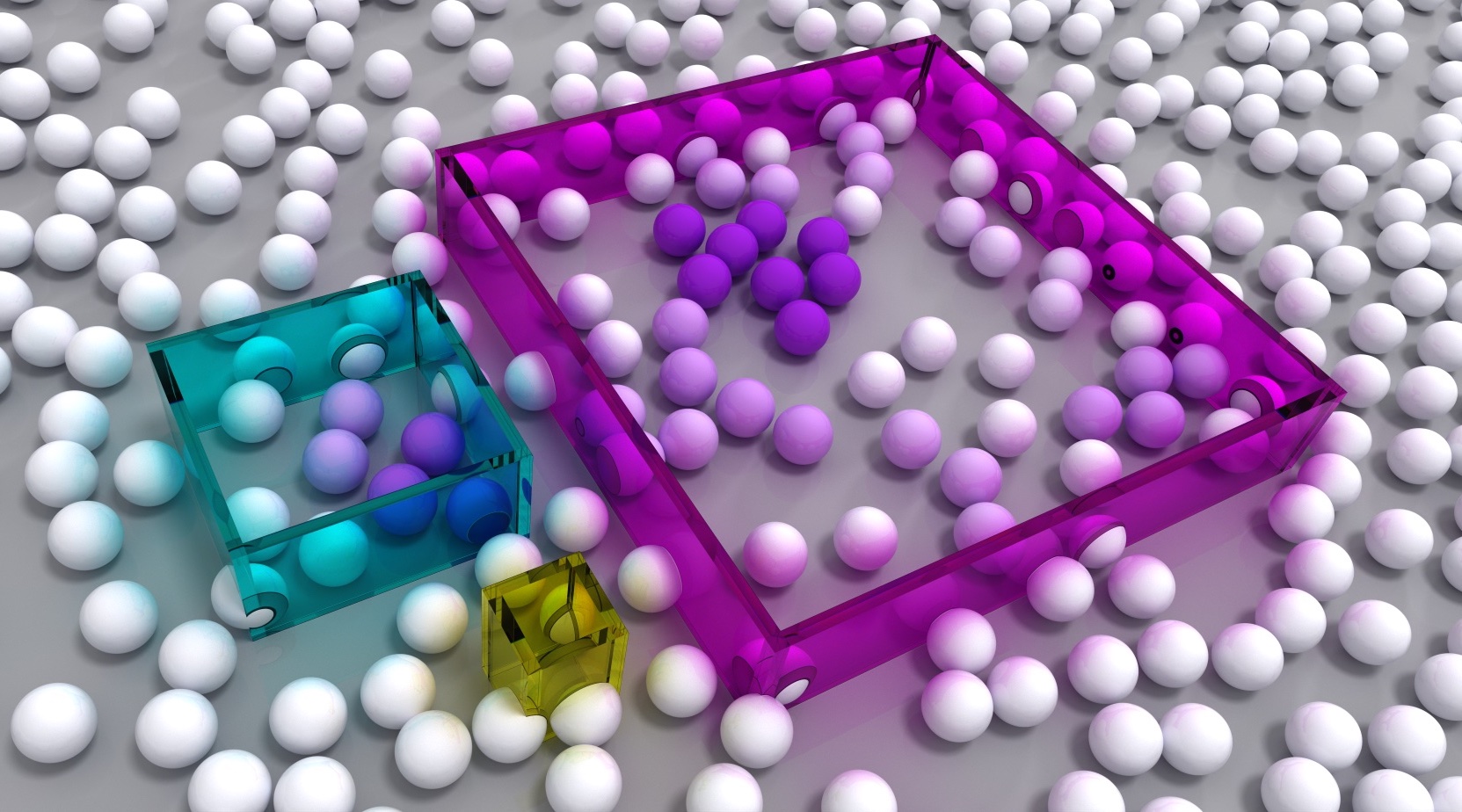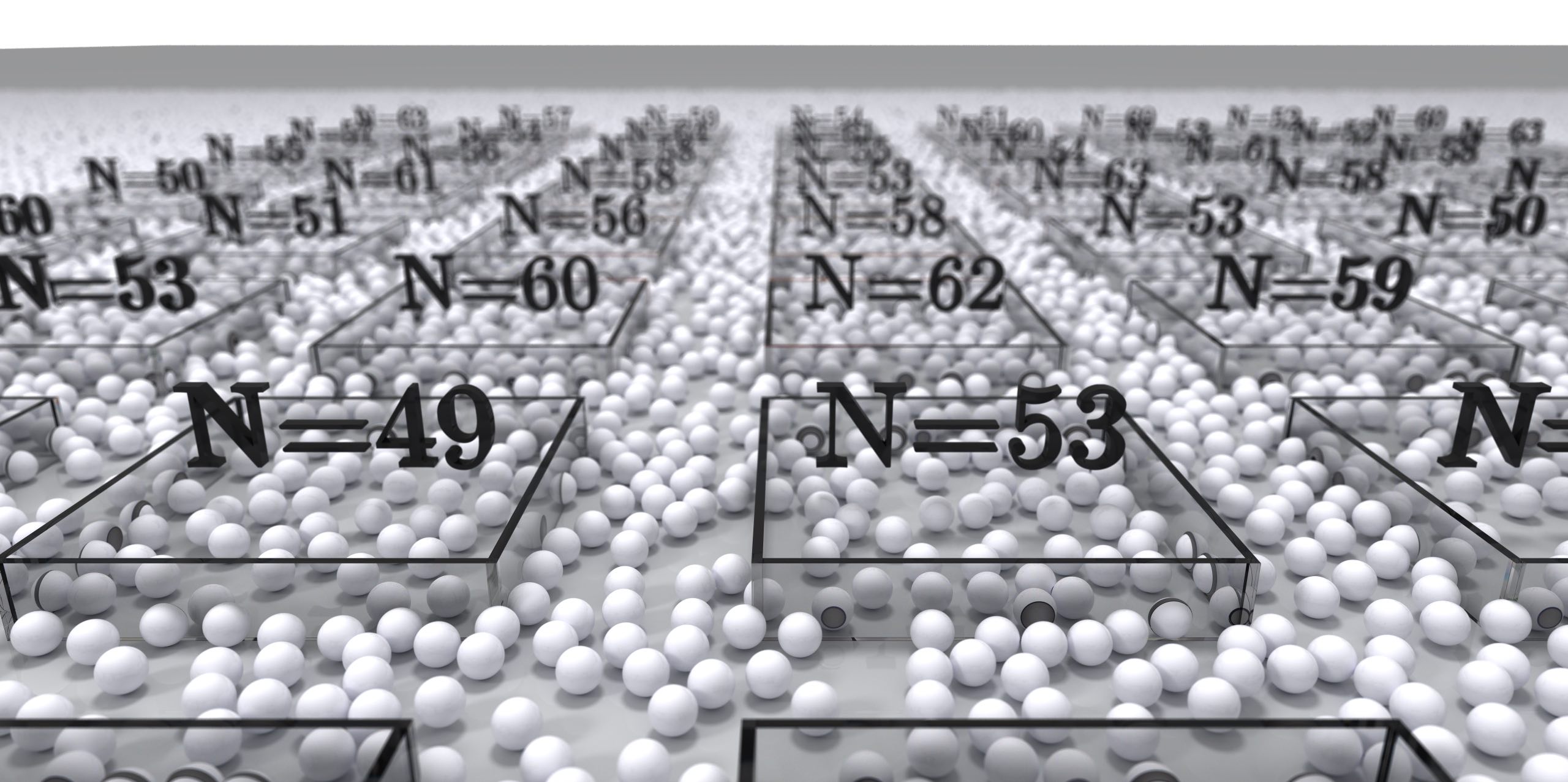Gallery

(image credit: Brennan Sprinkle) Counting particles in boxes of different sizes can inform us on various dynamics. Small boxes (yellow) inform on individual dynamics while large boxes (pink) inform on group motion.

(image credit: Brennan Sprinkle) Counting in multiple boxes of an image or a simulation improves statistics and allows us to learn dynamic properties reliably from the fluctuating signals.